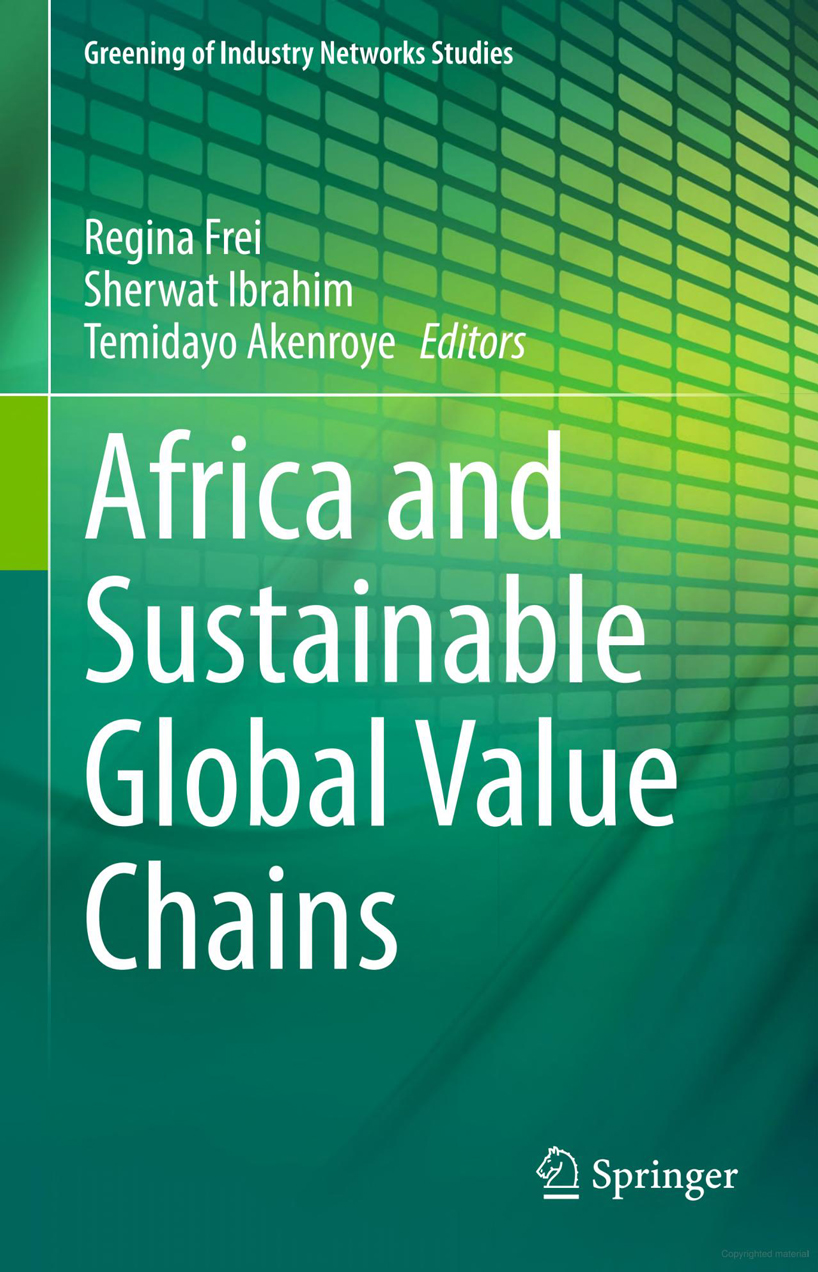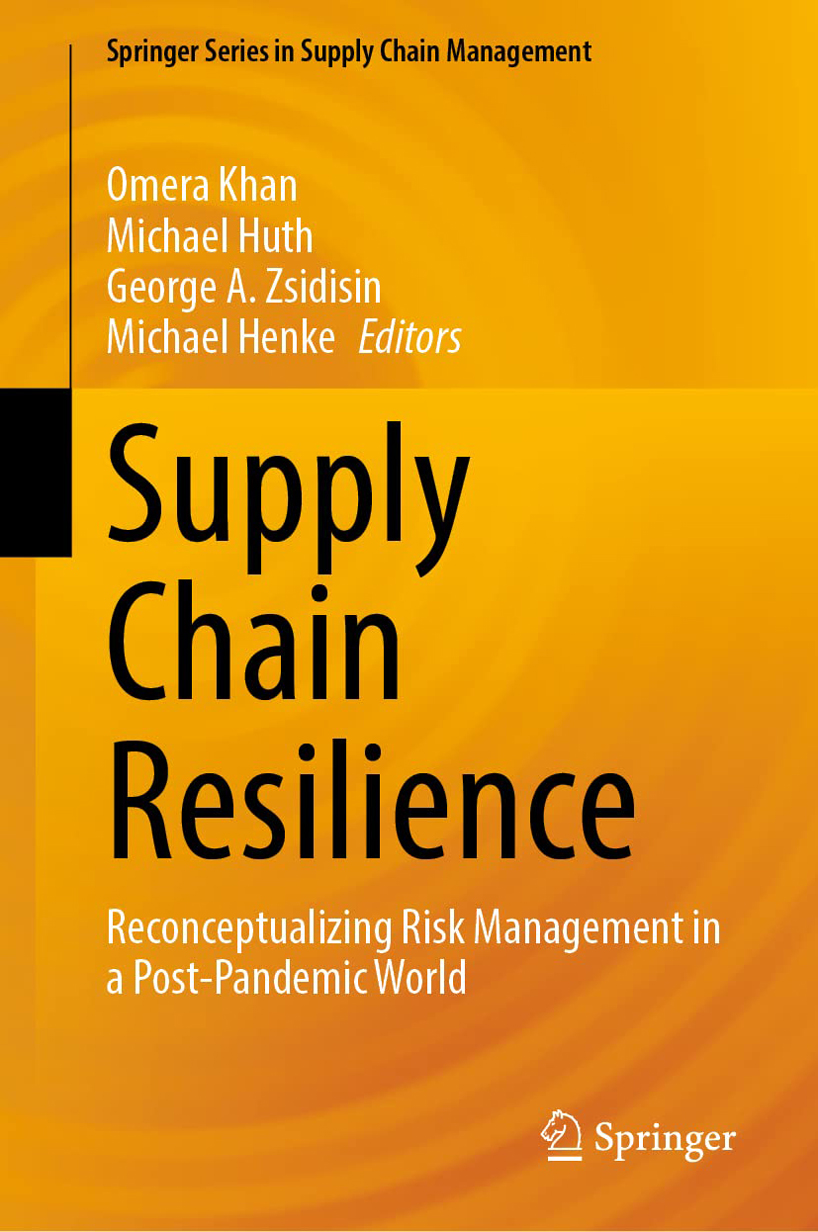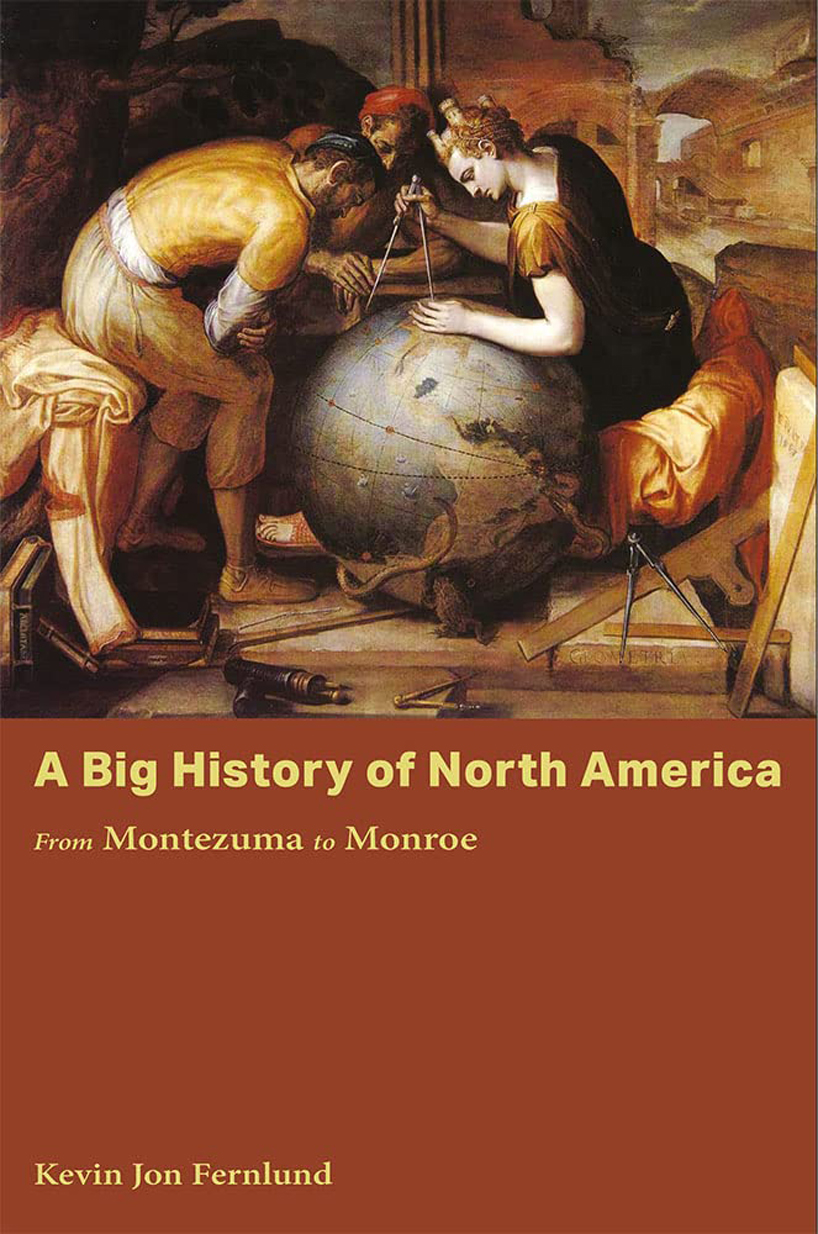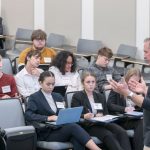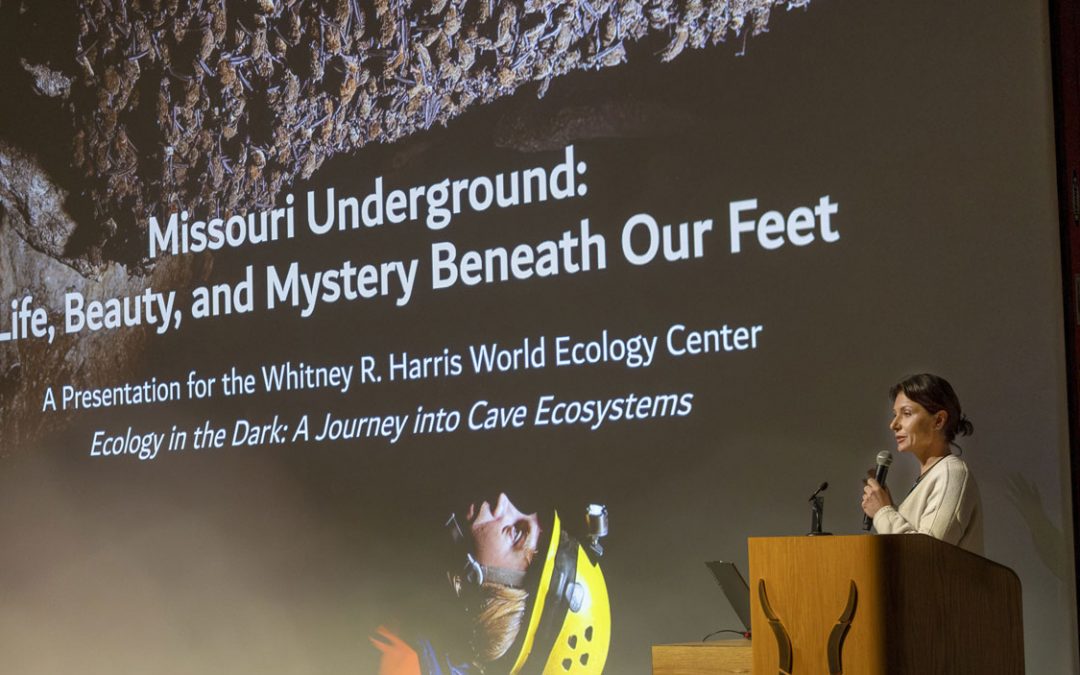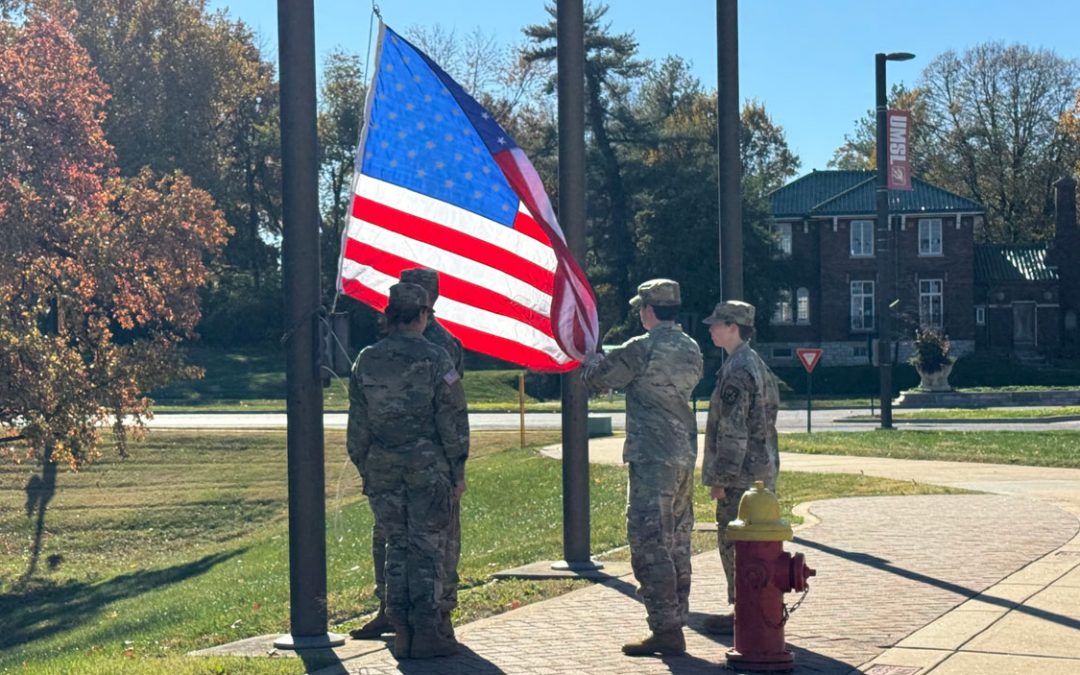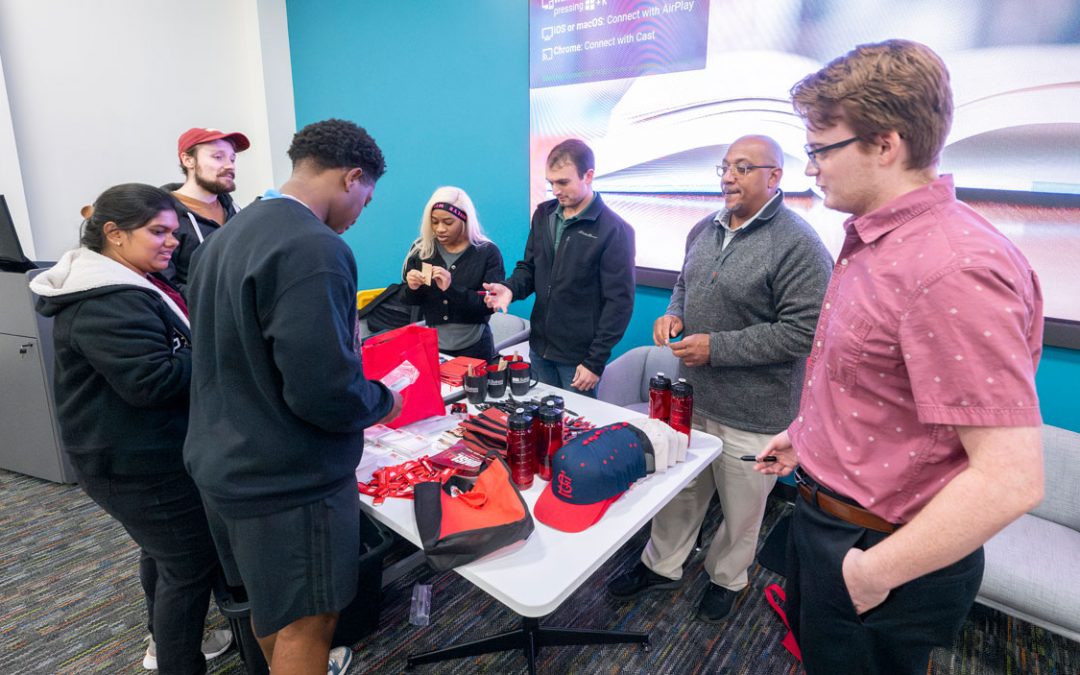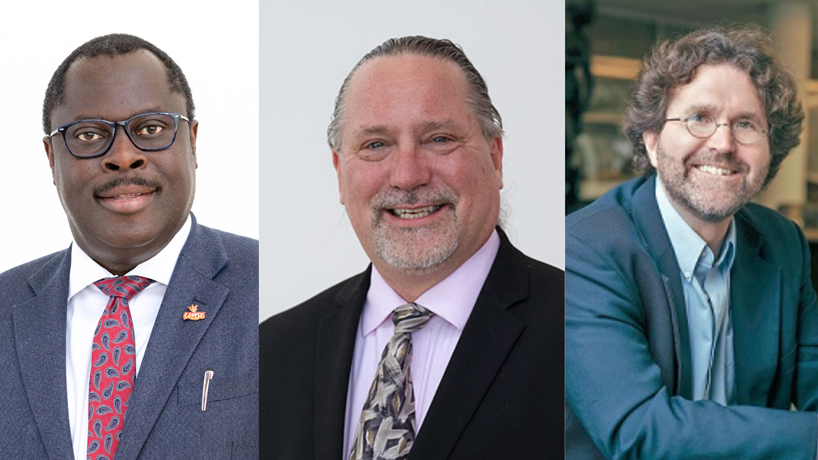
Faculty members Temidayo Akenroye and George Zsidisin have co-edited books on supply chain, and Professor Kevin Fernlund has written a book on the history of North America inclusive of Mexico.
University of Missouri–St. Louis faculty members continue to contribute to the production and dissemination of knowledge. Three have recently produced books with Temidayo Akenroye, an associate professor of supply chain analytics, and George Zsidisin, the John W. Barriger III Professor of Supply Chain Management, co-editing separate works on strengthening supply chains and Kevin Fernlund, a professor of history, authoring a book about North American history inclusive of Mexico.
Akenroye has co-edited the book “Africa and Sustainable Global Value Chains,” which explores the practices of African businesses and how they operate within sustainable global value chains. It also identifies challenges and discusses solutions that could help farmers streamline their processes sustainably and add value to their product to make more money.
“A country like Ghana misses out on revenue and economic growth opportunities if it only produces cocoa and exports it without further processing,” said Akenroye, offering one example. “It’s different from them producing chocolate, right? If chocolate is produced in Ghana, for instance, and then it’s shipped down here, then Ghana can retain the majority of the cost and the price that comes to the producer.”
The professor would like to see farmers in Africa get a larger profit for all of their hard work. He also believes there are more sustainable solutions that will help farmers maintain their crops, produce higher value products and maintain the environment. These changes in global value chain, the full range of activities that economic actors engage in to bring a product to market, would hopefully help vendors achieve sustainability while increasing profits.
Part of Akenroye’s research included visiting Kenya to observe the process of producing coffee and identify ways to create more sustainable farming practices. One of the observations was that the water used to spray the coffee plants could be “recaptured” and later used to fertilize the plants as it contains the same elements of organic fertilizer.
Another suggestion from Akenroye was to use a plant-based oil as a pesticide instead of chemicals, which leak into the soil and water and can kill fish and make people who drink water from the rivers ill. The oil would be cheaper than regular pesticides and not toxic.
Though the solutions made sense, because of cost and lack of resources, they were not practical.
“So imagine some of these people struggle to buy oil to eat, to cook food?” Akenroye said. “Then you’re saying they should take that oil to go and wet spray the farm? It is not feasible.”
The struggle between implementing more sustainable processes that would presumably lead to more profit and the cost of those protocols is an ongoing issue for many African businesses, a challenge discussed throughout the publication.
Akenroye’s book, “Africa and Sustainable Global Value Chains,” published by SpringerLink, is available now.
Zsidsin has co-edited “Supply Chain Resilience,” which features work from about 40 scholars and explores different approaches firms used once COVID-19 hit to cope with its impact, how technology aided in supply chain procedures, what lessons were learned from the experience and what supply chains structures will look like in the future.
Though Zsidisin and his network of supply chain scholars had written books on the topic previously, the pandemic presented an opportunity to examine the disruptions in supply chain that occurred during an unprecedented event, revealing severe breakdowns in protocols and how they impacted society.
“We decided that this is an absolutely tragic but monumental event that is occurring,” Zsidsin said. “And supply chain has a huge effect on the way we’re even able to survive as societies. We all need food, we all need water, we all need the clothing that we wear. We’re very dependent upon supply chains.”
The publication also asks the question, why were companies so unprepared to meet the supply chain demands of the public during the height of COVID-19 pandemic. They’d gotten an idea of how supply chain could be interrupted from other public health emergencies such as SARS and avian influenza, which first emerged in 1996 and is being highlighted in current news. But the difference was that everything wasn’t closed.
“In March, it shut down – not just the United States, throughout the world,” Zsidisin said. “Most countries completely shut down. Everyone had to stay indoors and quarantine. That did not occur with the Avian Bird flu. So in some ways, organizations started knowing about this in December, it wasn’t just in March. They thought it might be a little blip, a minor issue that we will get through. But very few people realized the level of magnitude this really brought to our society.”
An example in the book of what could be done differently in the future to avoid severe disruptions in supply chain is stockpiling, a practice Zsidisin said wasn’t typical prior to the pandemic. He also noted that things like protective gear were in short supply, even for hospital workers, because of lack of anticipation. The inability to protect people, which Zsidisin calls the center of supply chain, was a major misstep in supply chain procedures during the intensity of COVID-19.
The major takeaway Zsidisin would like readers to observe is “know your supply chain.”
“Know who your suppliers are, the sources you obtain, the materials you purchase and the services you acquire,” he said. “Have a better understanding of what those potential vulnerabilities are and that sometimes the things that will disrupt you are not those that are intuitive.”
Zsidsin’s book, “Supply Chain Resilience,” published by SpringerLink, is available now.
Fernlund’s book, “A Big History of North America: From Montezuma to Monroe,” examines the history of North America, but includes Mexico, a connection according to the professor and author not often explored by historians.
“You have two countries, Canada and the United States, that share a common language, a common history, a common connection to the mother country, England,” Fernlund said. “Mexico does not share any of those things. Mexico has a very different history. Its connection goes back to Spain. It speaks Spanish. It’s Catholic, whereas English or British North America – Canada and the United States – was largely Protestant. So there were important cultural, linguistic and historical reasons why historians sort of divided North America up into the English-speaking part and the Spanish-speaking part. And that divide really is what has defined the historiography of North America. That is how historians write about it.”
Fernlund believes the omission of Mexico from North American history is a disservice to those interested in the origins of the United States. Even though it’s not a territory of the U.S., Mexico helped shape the history of North America. It has contributed to many aspects of culture, language and religion.
“We share a common European history,” he said. “Whether it’s the Judeo-Christian tradition, whether it’s the Germanic tradition, the Greco-Roman tradition, all three countries share those traditions. And we share a rich Indigenous history.”
Mexico is often left out of discussions and narratives of North American history because many people view it as being separate.
“There are people who don’t even really appreciate the fact that Mexico is a part of North America,” Fernlund said. “It’s a continent that all three countries share. But I think a lot of people feel that the Rio Grande forms this divide – that there’s one world to the north of it and one world to the south of it.”
Fernlund believes it’s important to “know your neighbors” and get a general understanding of people in adjoining countries to be more informed and create a less insular society.
“It’s important so that you can appreciate your fellow North Americans,” he said. “You can relate better to them. Maybe you could see that we share a common history and common humanity.”
Fernlund’s book, “A Big History of North America: From Montezuma to Monroe,” published by University of Missouri Press, is available now.

